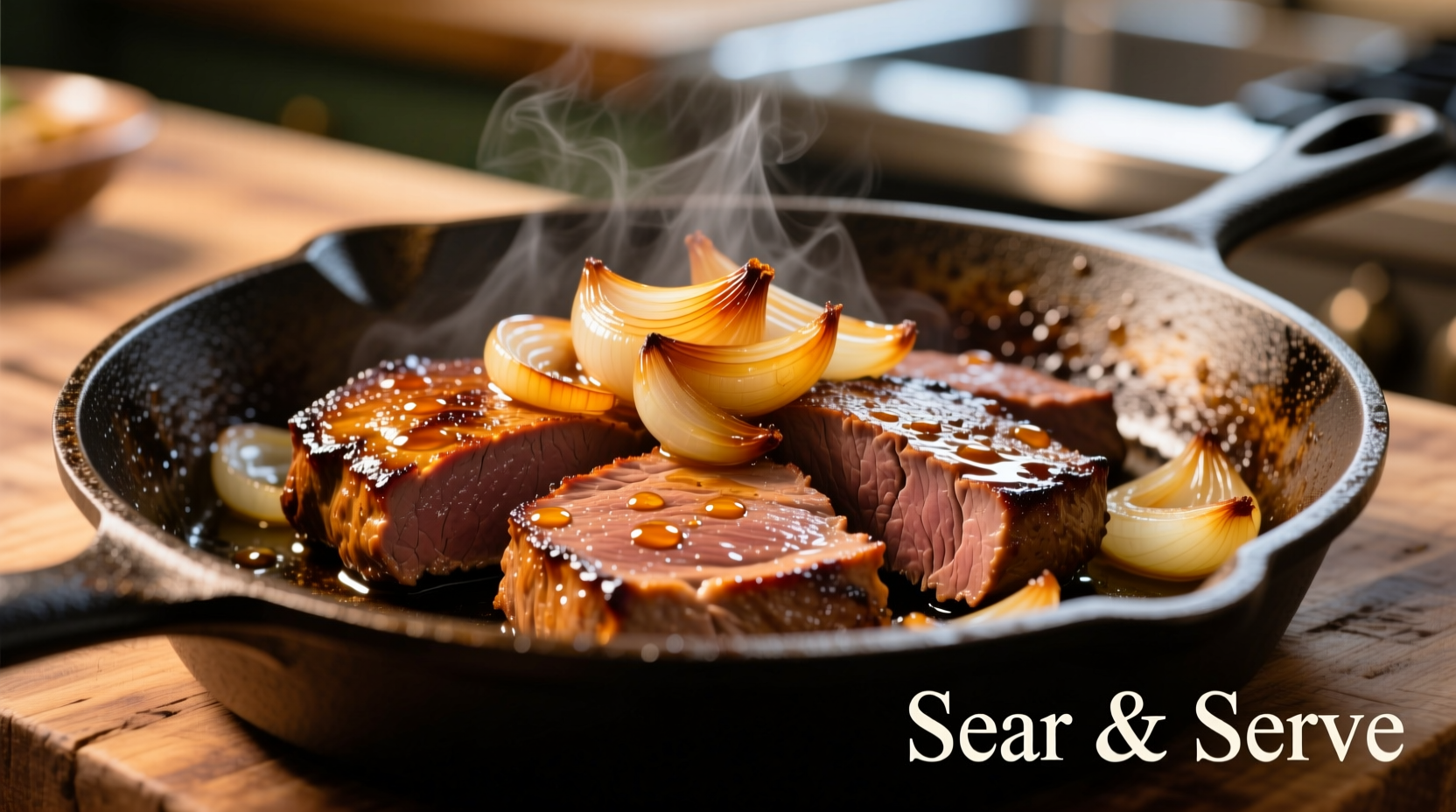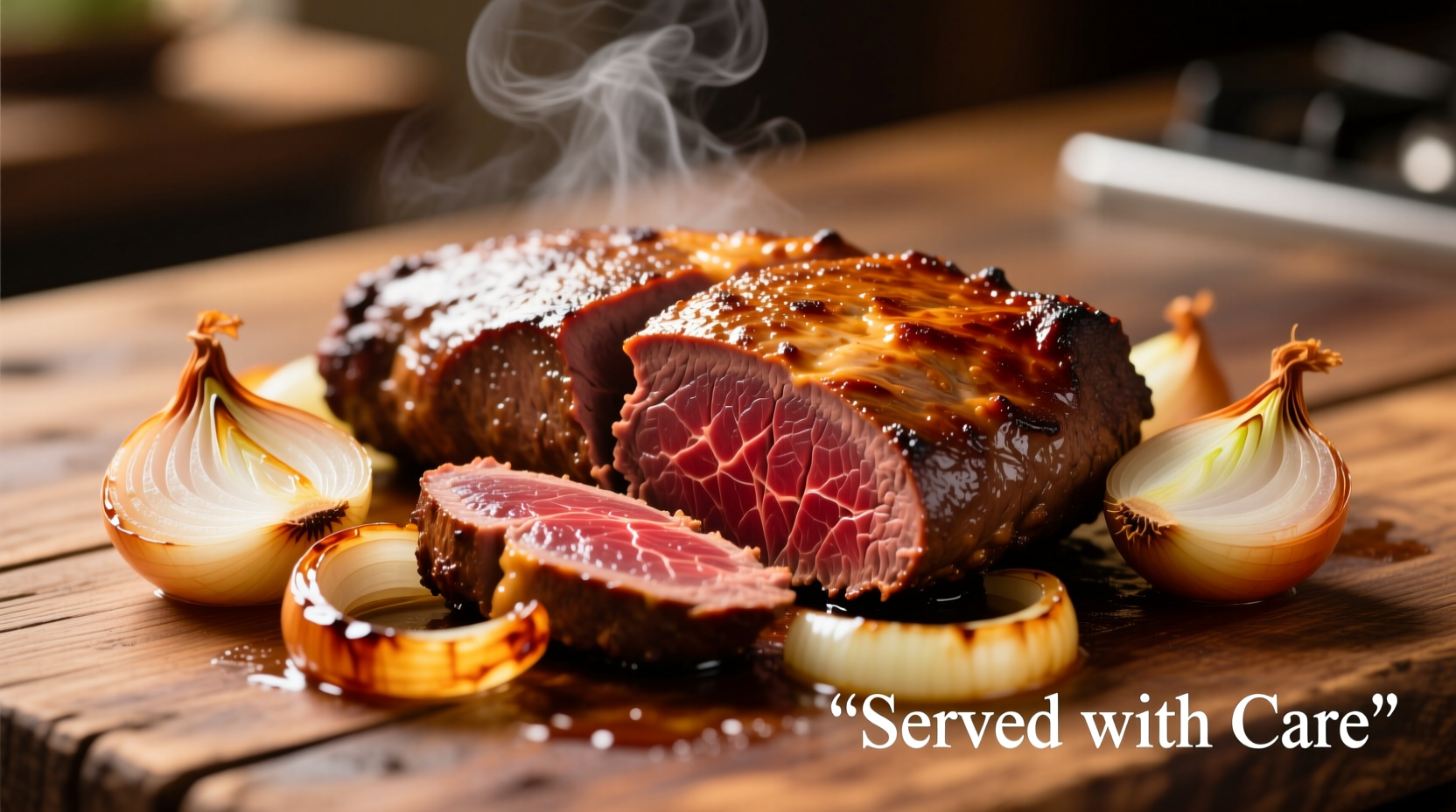The Enduring Appeal of Liver and Onions: More Than Just Comfort Food
For generations, liver and onions has been a staple in kitchens across Europe, North America, and Latin America. This humble dish delivers extraordinary nutritional value when prepared correctly, yet many home cooks struggle with its reputation for strong flavor and challenging texture. Understanding the science behind proper preparation transforms this traditional meal into a culinary delight.
Historical Journey of Liver and Onions
Tracing liver and onions takes us through centuries of culinary adaptation. This dish emerged from practical necessity rather than gourmet intention:
- 18th-19th century Europe: Butchers sold liver cheaply as "offal" to working-class families who developed cooking methods to make it palatable
- Early 20th century: Jewish immigrants in New York popularized the dish in American diners, often using calf's liver for its milder flavor
- Mid-20th century: Became a Depression-era staple due to affordability and nutritional density during food shortages
- Modern era: Experiencing a resurgence among nose-to-tail eating advocates and nutrition-focused cooks
Nutritional Powerhouse Backed by Science
Beef liver stands as one of nature's most concentrated nutrient sources. According to USDA FoodData Central, a 3.5-ounce (100g) serving of cooked beef liver contains:
| Nutrient | Amount per 100g | % Daily Value |
|---|---|---|
| Vitamin A (Retinol) | 6,500 mcg | 722% |
| Vitamin B12 | 83 mcg | 3,460% |
| Copper | 14 mg | 1,555% |
| Folate | 290 mcg | 72% |
| Iron | 6.5 mg | 36% |
This nutritional density explains why traditional cultures valued liver despite its strong flavor profile. The high vitamin A content supports vision and immune function, while B12 is essential for neurological health. However, proper preparation is crucial to access these benefits without unpleasant taste or texture.
Mastering Liver and Onions: A Step-by-Step Guide
Professional chefs and home cooks who've mastered this dish follow these evidence-based techniques:
Ingredient Selection Matters Most
The foundation of great liver and onions starts with quality ingredients:
- Liver type: Opt for calf's liver (mildest flavor) or chicken liver (creamiest texture) if new to the dish
- Freshness check: Liver should have deep reddish-purple color with no dark spots or strong ammonia smell
- Onion selection: Yellow onions provide the best balance of sweetness and pungency for caramelization
Preparation Techniques That Make the Difference
What happens before cooking determines final results:
- Soaking solution: Submerge liver in buttermilk or milk with lemon juice for 30-60 minutes to neutralize bitterness
- Membrane removal: Carefully peel the thin membrane from liver slices using a sharp knife
- Drying step: Pat liver thoroughly dry before cooking—moisture causes steaming rather than searing
The Perfect Cooking Process
Follow this sequence for optimal texture and flavor development:
- Heat cast iron skillet over medium-high until water droplets dance on surface
- Add 1 tbsp oil with high smoke point (avocado or ghee work best)
- Cook liver in single layer without crowding (2-3 minutes per side for medium-rare)
- Remove liver immediately when edges turn gray (it continues cooking off-heat)
- Caramelize onions separately in same pan with pinch of sugar for 20-25 minutes
- Combine liver with onions just before serving to maintain texture
Cultural Variations Worth Exploring
While basic preparation remains consistent, regional adaptations showcase culinary creativity:
| Region | Distinctive Technique | Flavor Enhancer |
|---|---|---|
| Eastern European | Double-frying method | Sour cream and paprika sauce |
| Mexican (Hígado encebollado) | Quick sear with jalapeños | Lime juice and cilantro finish |
| French (Foie de veau aux oignons) | Wine deglazing | Thyme and bay leaf infusion |
| Southern US | Buttermilk soak | Vinegar-based pan sauce |
Addressing Common Concerns
Many avoid liver due to misconceptions that proper technique can overcome:
"Liver tastes too strong"
The soaking step in acidic liquid (buttermilk, milk with vinegar, or even beer) significantly reduces the metallic flavor while maintaining nutritional value. Don't skip this crucial preparation step.
"Liver always turns out rubbery"
Overcooking is the primary culprit. Liver should be cooked rare to medium-rare—similar to steak. Use a timer and remove from heat when internal temperature reaches 130-135°F (54-57°C).
"My family won't eat organ meats"
Start with small portions mixed into familiar dishes. Finely diced chicken liver works well in meatloaf or burger blends, introducing the nutritional benefits without overwhelming flavor.

Maximizing Your Liver and Onions Experience
Pair your dish with complementary flavors that balance liver's richness:
- Acidic elements: A squeeze of lemon or apple cider vinegar cuts through richness
- Sweet contrasts: Caramelized onions or roasted apples balance earthy notes
- Starchy sides: Mashed potatoes or polenta provide neutral base for bold flavors
- Wine pairing: A medium-bodied red like Merlot complements without overwhelming
For optimal nutrient absorption, serve with vitamin C-rich foods like roasted bell peppers or a side salad with citrus dressing. The vitamin C enhances iron absorption from the liver.
Practical Tips for Consistent Success
Professional chefs recommend these evidence-based techniques:
- Temperature control: Bring liver to room temperature before cooking for even searing
- Salt timing: Season just before cooking—salt draws out moisture that prevents proper browning
- Resting period: Let liver rest 5 minutes after cooking to redistribute juices
- Batch cooking: Cook in multiple batches rather than overcrowding the pan











 浙公网安备
33010002000092号
浙公网安备
33010002000092号 浙B2-20120091-4
浙B2-20120091-4